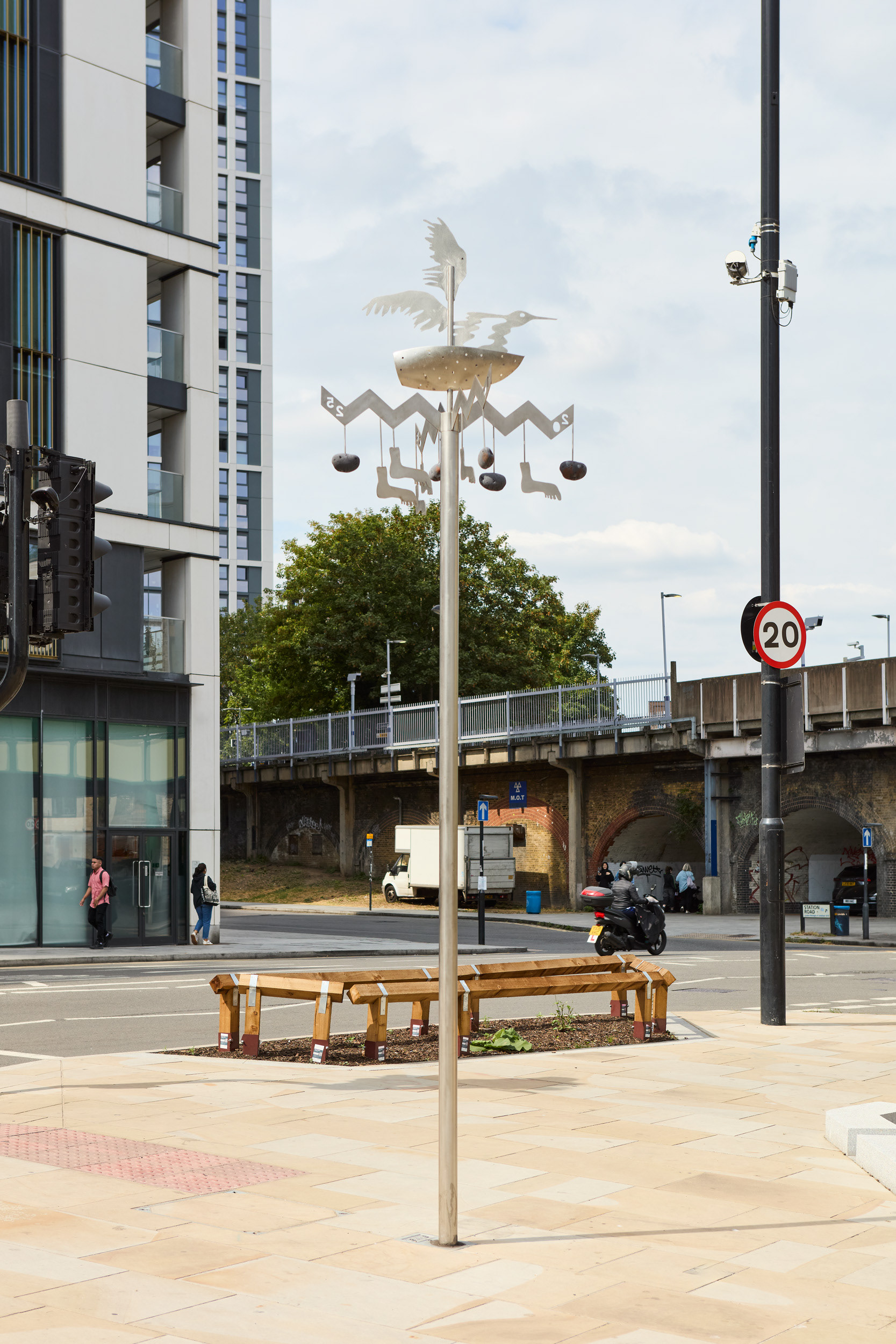
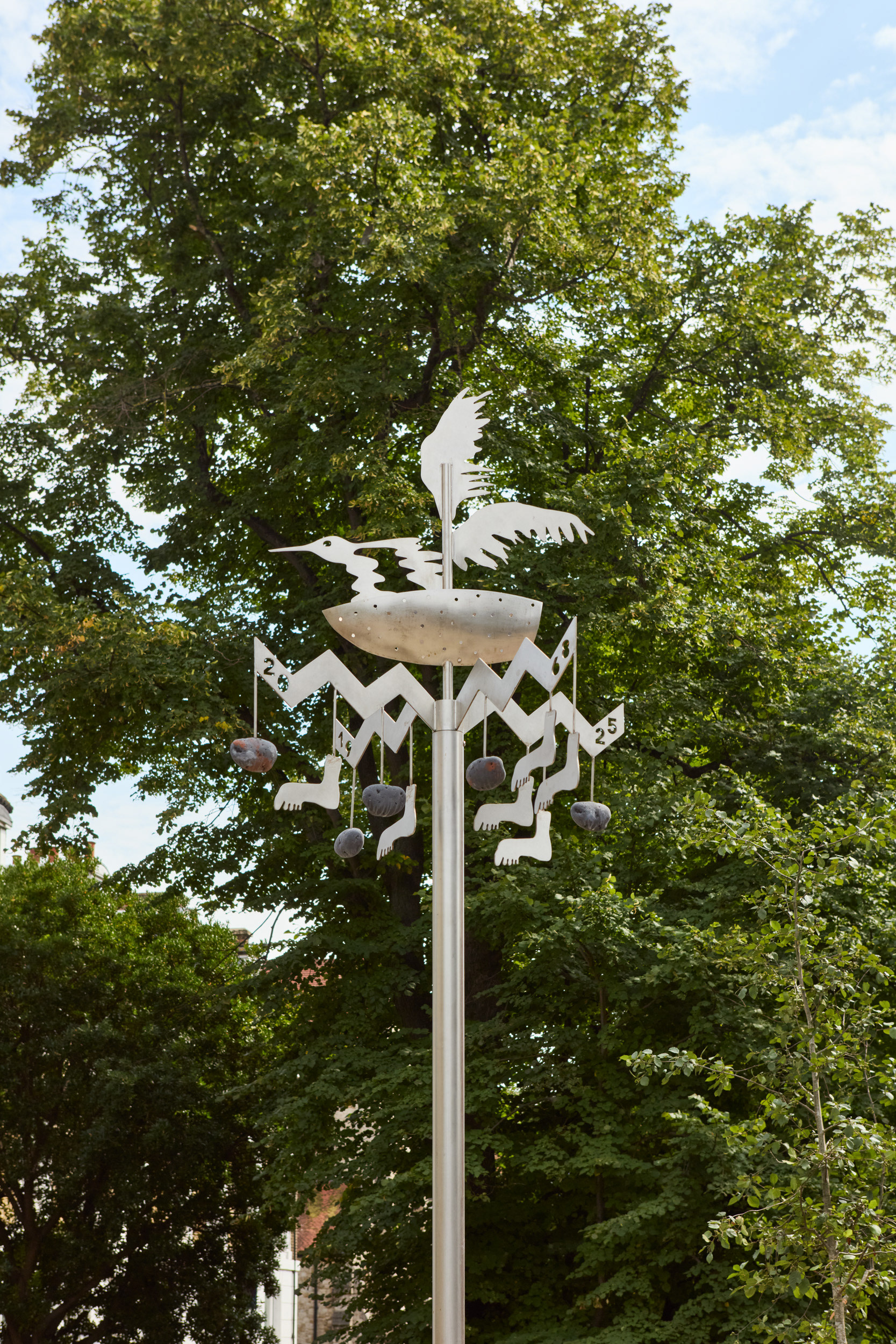
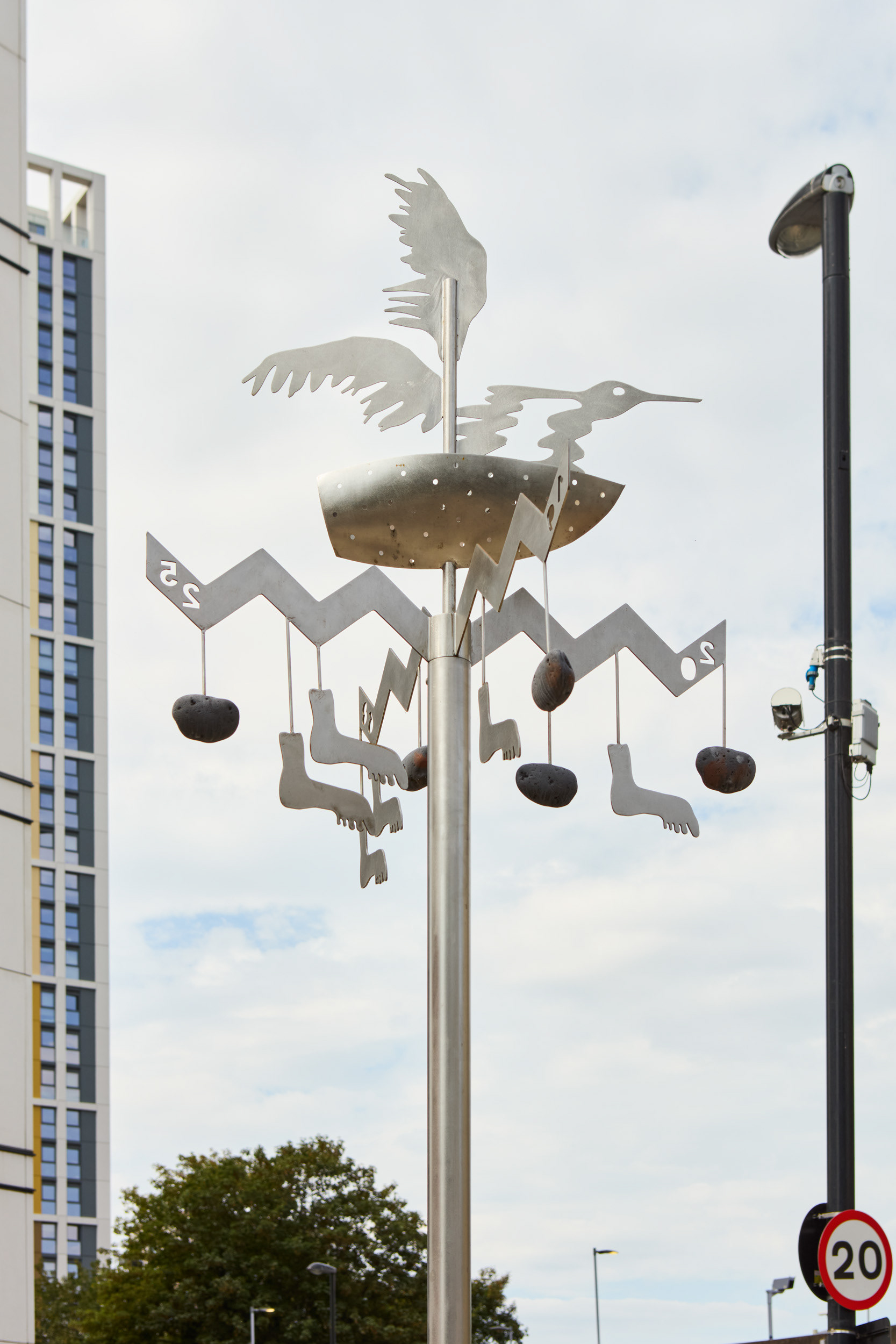
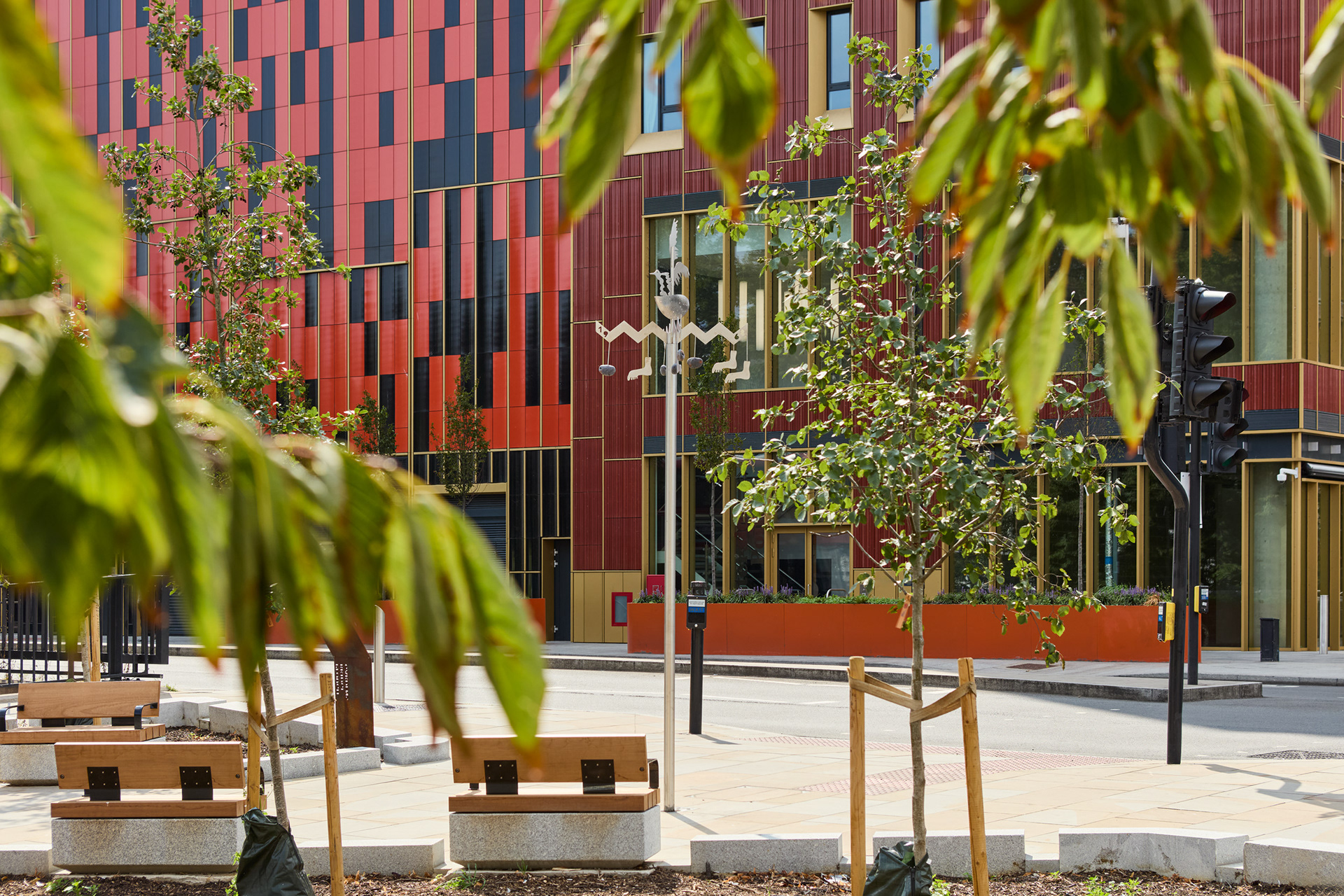
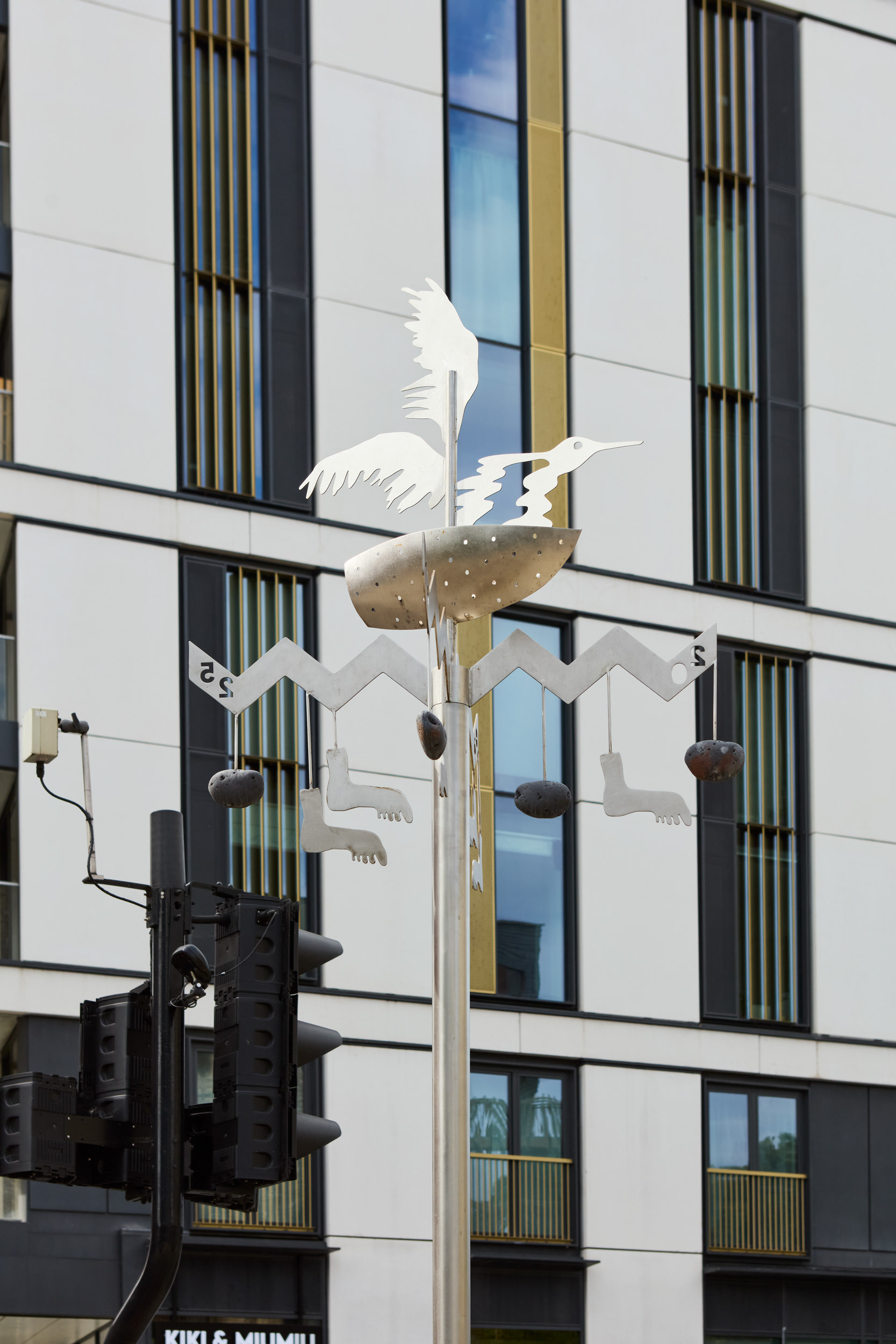
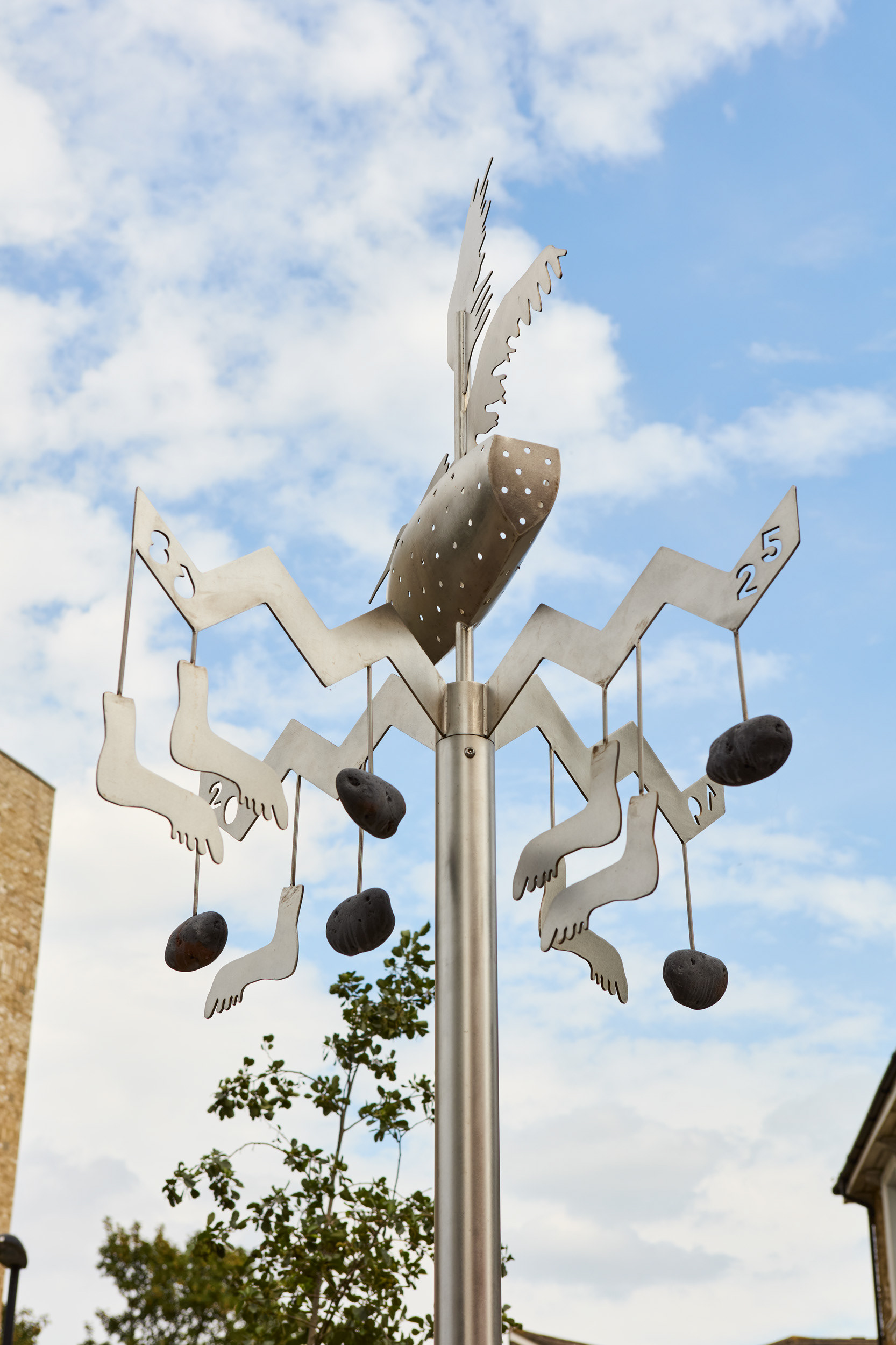
Street Waders is a public sculpture for Lewisham High Street.
Responding to the memories of local people who experienced Lewisham’s Great Flood of 1968, Street Waders, acts as a weathervane, responding to changes in the weather and environment surrounding Lewisham’s River Quaggy. Incorporated into the design are silhouettes of a kingfisher and reed-like plant forms. Central to its imagery is a risen water line evoked by a zigzag, above which is a hollow vessel, perforated with holes allowing rainwater to drip through. Hanging beneath the water line are dangling, wading feet and cast impressions of smooth black rocks, representing Blackheath Pebbles, the 55-million-year-old rocks found on the bed of the Quaggy.
Merging site-specificity with community narratives, the work comes at a time when fostering a local ecological consciousness is paramount to our survival. Incorporating elements of the past, present and future of the river, the work intends to act as a wayfinder for our ongoing relationships to the urban environment within a changing climate and increasingly volatile meteorological events.
Street Waders was commissioned by Lewisham Underwater, part of the In Living Memory programme. Led by Goldsmiths, University of London, In Living Memory celebrated Lewisham’s diversity and heritage during its year as London Borough of Culture 2022 and empowered local communities to tell their own stories. The project archive be found at: https://sites.gold.ac.uk/inlivingmemory/
On 15 - 16 September 1968, following days of torrential rain, much of Lewisham found itself under water. What became known as the ‘Great Flood’ had a profound effect on the borough. Lewisham Underwater is a collaboration between the Quaggy Waterways Action Group (QWAG) and Lewisham Council to gather residents’ memories, photos, diary entries and other recollections of the flood. Through ecologically enhanced public spaces, public art, river-based activities - and even a specially brewed beer - the project connects an event over 50 years ago with our relationship to local rivers today.